Overview
The article delineates ten pivotal trends in real estate development anticipated to shape the industry by 2025. Among these trends are:
- The escalation of home prices
- A burgeoning demand for affordable housing
- The significant impact of remote work on housing preferences
Supported by data, these trends reveal a shift in consumer preferences toward:
- Sustainability
- Mixed-use developments
- Health-focused amenities
This evolution in the real estate landscape is driven by demographic changes and economic factors, underscoring the importance of adapting investment strategies to align with these emerging trends.
Introduction
The landscape of real estate development is on the brink of transformation, as key trends emerge that will shape the market dynamics of 2025. Rising home prices, shifts in demographic preferences, and an increasing emphasis on sustainability present stakeholders in the industry with both challenges and opportunities.
As migration to low-tax states accelerates and younger generations prioritize community-oriented living, a critical question arises: how can developers adapt their strategies effectively to meet the evolving needs of buyers while ensuring profitability in an increasingly competitive environment?
This evolving landscape demands a proactive approach, urging industry players to reassess their methods and align with the changing market demands.
Zero Flux: Essential Insights for Real Estate Development Trends
Zero Flux serves as an essential resource for property professionals, curating vital insights, including real estate development news, from over 100 diverse sources. By focusing on factual information, it aids subscribers in navigating the complexities of real estate development news. The newsletter's unwavering commitment to data integrity ensures that the real estate development news trends discussed are not only relevant but also actionable for industry stakeholders. With a robust subscriber base exceeding 30,000, Zero Flux has positioned itself as a trusted authority in the field.
As we delve into the key trends highlighted in the real estate development news for 2025, including:
- A projected rise in home prices by approximately 10% to 11%
- An anticipated increase in rental prices slightly above inflation
The insights provided by Zero Flux will be instrumental in guiding informed decision-making. Industry leader Vidit Saxena emphasizes, "Effective strategies on how to use debt to buy real estate can maximize investment returns," underscoring the importance of leveraging curated insights for a strategic advantage.
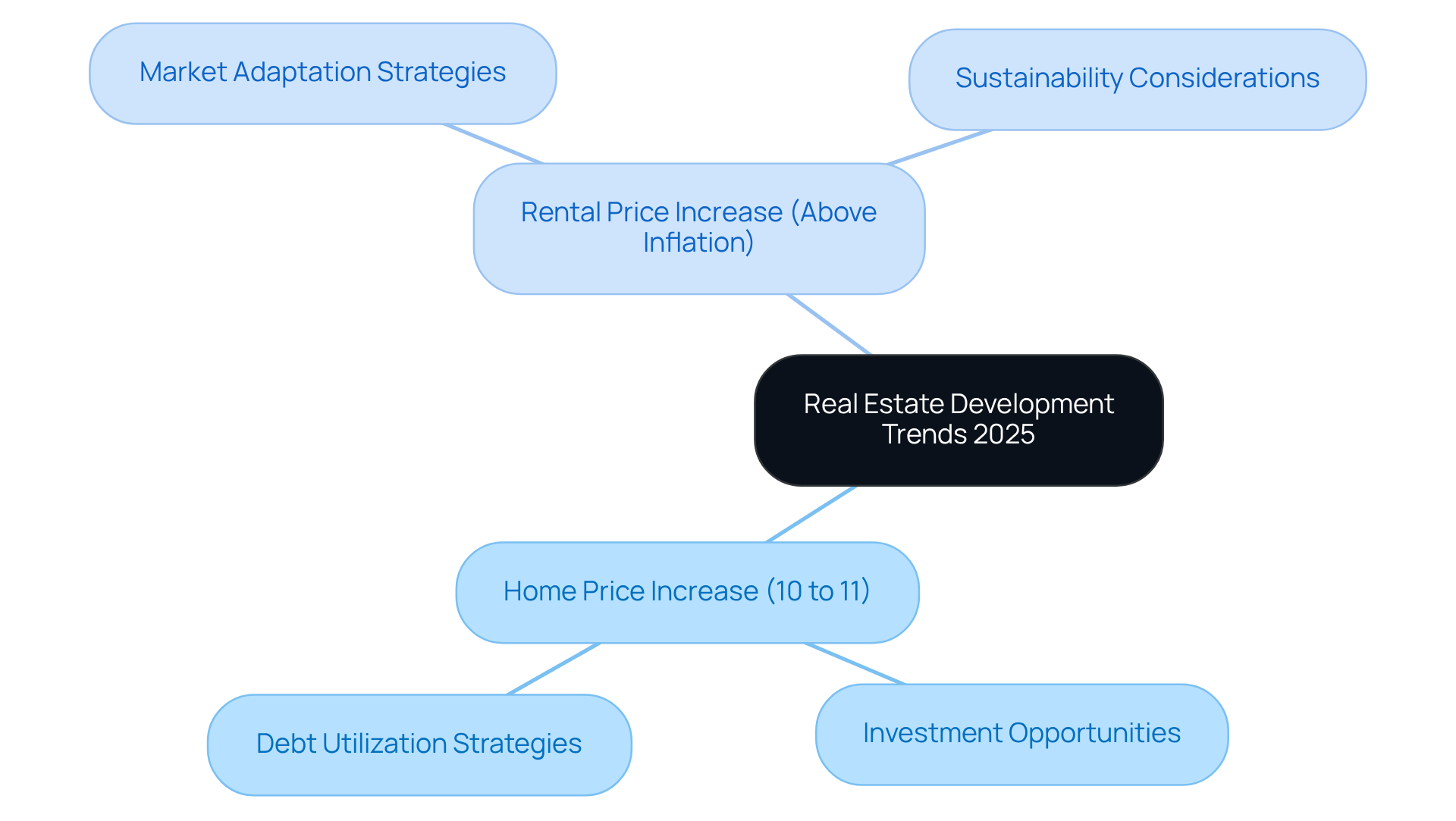
Migration to Low-Tax States: Impact on Real Estate Development
The migration trend towards low-tax states is intensifying as individuals and families pursue more favorable living conditions. According to recent real estate development news, Texas and Florida are at the forefront of this movement, witnessing a significant influx of residents that is driving demand for new residential developments. By 2025, demand for residences in these states is anticipated to surge, with Texas projected to see a 15% increase in new home construction and Florida experiencing a 10% rise in property values due to heightened interest from out-of-state purchasers.
This migration not only strengthens local economies but also transforms the real estate landscape, as reported in real estate development news, compelling developers to prioritize affordability and accessibility in their projects. A prime example is the City of John Day's residential incentive program, which offers a 7% cash rebate for new home construction. This initiative illustrates how local authorities are tackling accommodation challenges by fostering development, particularly catering to the needs of newcomers relocating to low-tax regions and stimulating property activity to meet the growing demand.
The impact of relocating to low-tax states is profound, influencing not just the types of properties being developed but also the overarching trends highlighted in real estate development news. With an increasing focus on sustainable and affordable living solutions, developers are honing in on projects that resonate with the preferences of incoming residents, strategically positioning themselves for success in the evolving real estate environment.
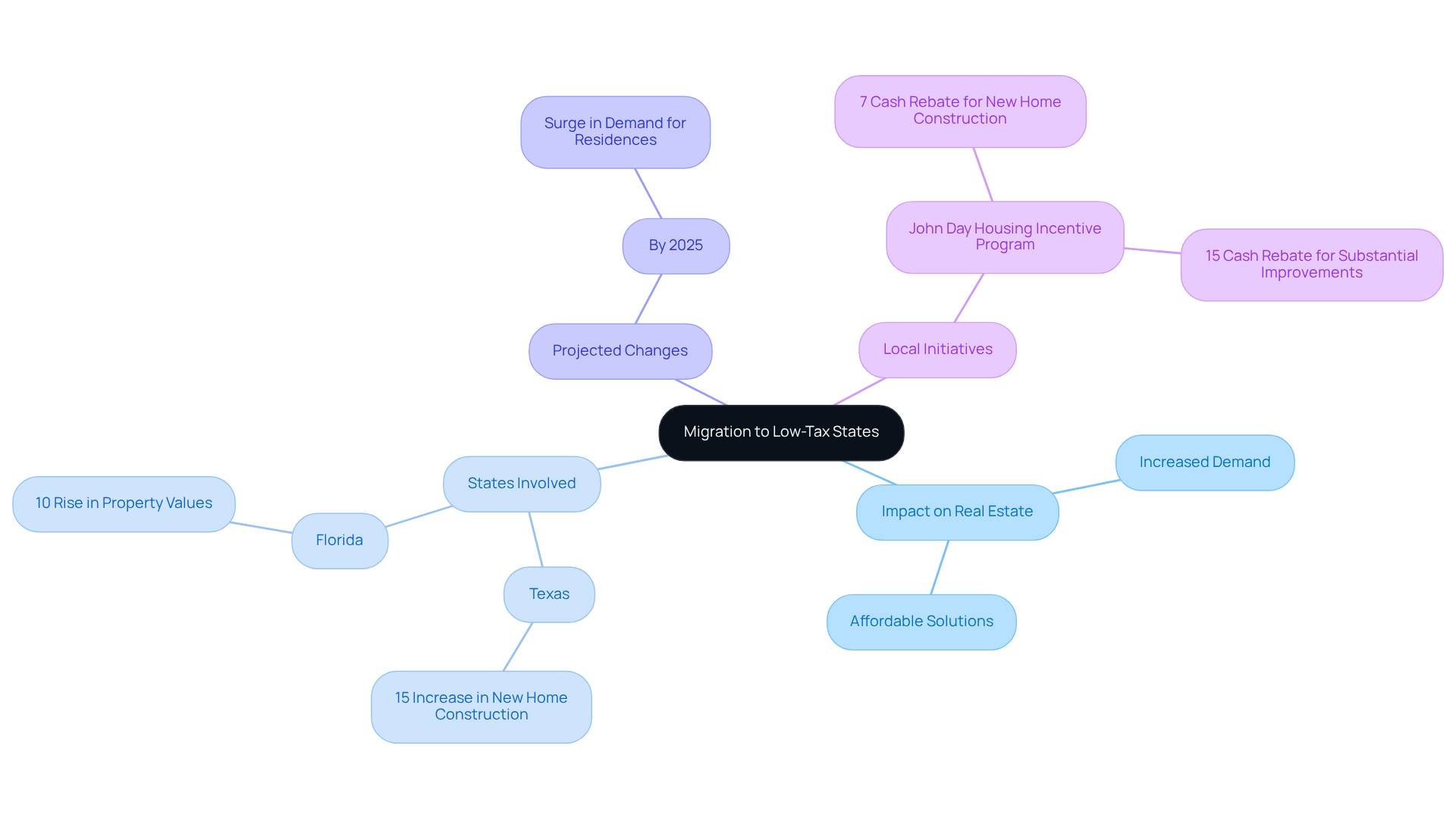
Millennial and Gen Z Mobility: Shaping Future Housing Markets
Millennials and Gen Z are significantly transforming real estate environments through their unique mobility trends and preferences. These generations prioritize flexibility, sustainability, and community-oriented living, which are becoming essential considerations for developers. As they progressively enter the real estate market, there is a notable demand for urban living that offers proximity to amenities and environmentally friendly features. This shift is fueling the rise of mixed-use projects and smaller, more efficient living spaces tailored to the lifestyle preferences of younger buyers.
For instance, the increasing interest in co-living arrangements and short-term rentals reflects their desire for community and cost-sharing, particularly as many Gen Z individuals encounter affordability challenges. Furthermore, Gen Z's preference for walkable, mixed-use communities with access to public transportation underscores their commitment to sustainable living. Understanding these trends is crucial for developers who follow real estate development news, as the preferences of this influential demographic are expected to dominate the housing landscape in 2025 and beyond.
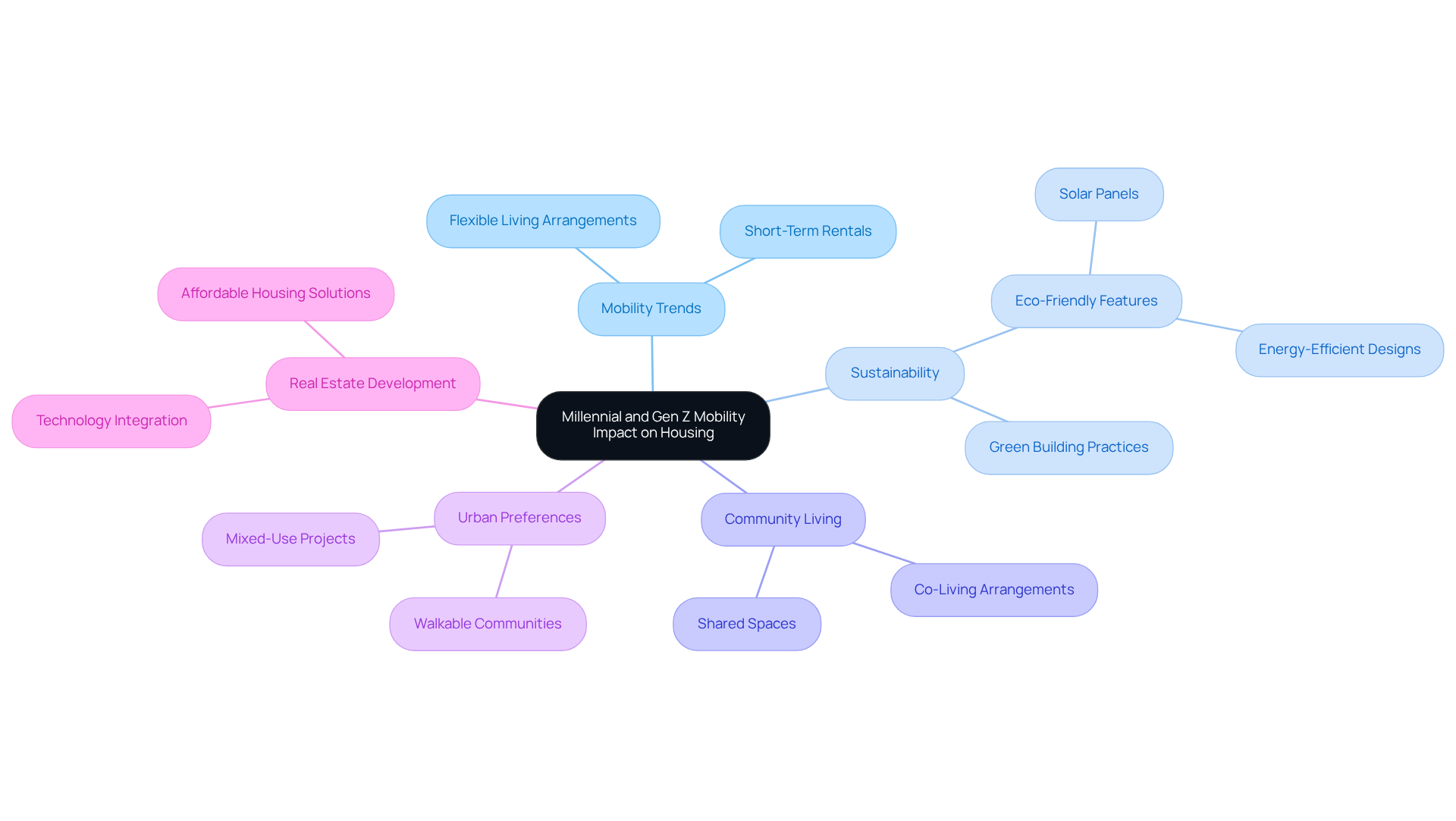
Sustainable Development Practices: Meeting Modern Buyer Expectations
Sustainable growth practices have transitioned from optional to essential in meeting the expectations of today's consumers. Eco-friendly materials, energy-efficient designs, and sustainable landscaping are now standard in new developments. Remarkably, buyers are willing to pay an average of 9.7% more for sustainably produced goods, underscoring a robust commitment to sustainability.
Developers who embrace these practices not only contribute to environmental conservation but also boost their marketability and long-term profitability. Incorporating recognized green building certifications, such as LEED or IGBC, can significantly enhance a project's appeal in a competitive market. Properties with such certifications have been shown to achieve sale prices up to 15% higher than their non-certified counterparts.
This trend illustrates that over 70% of purchasers prioritize sustainability, indicating that eco-friendly features are not merely appealing enhancements but essential components of contemporary real property offerings.
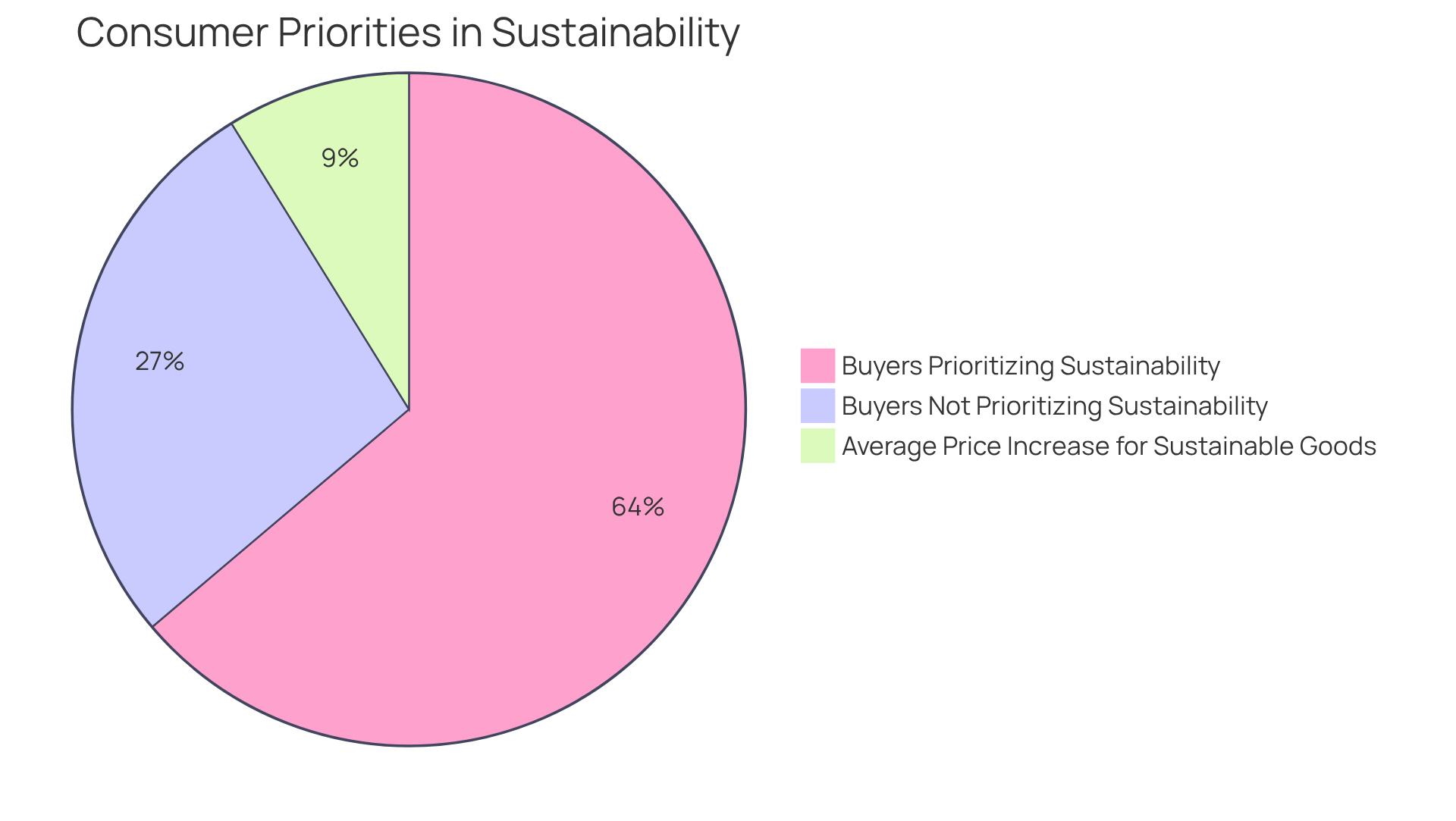
Technological Innovations: Revolutionizing Real Estate Development
Technological innovations are fundamentally transforming real estate construction. Virtual reality property tours and advanced project management software are leading the charge. These tools not only enhance operational efficiency but also significantly reduce costs while improving the overall buyer experience. For instance, properties featuring virtual tours engage 87% more individuals compared to those without, facilitating quicker decision-making and sales. Additionally, properties with 3D tours sell up to 31% faster and at a higher price, showcasing the tangible benefits of adopting such technologies.
Developers who adopt these innovations can optimize their processes, enabling greater flexibility to industry demands. Furthermore, integrating smart home technologies into new developments is increasingly attractive to tech-savvy buyers, who prioritize modern conveniences and are willing to pay a premium for such features. As the real estate environment continues to change, staying updated with real estate development news is essential for developers striving to preserve relevance and competitiveness in the industry.
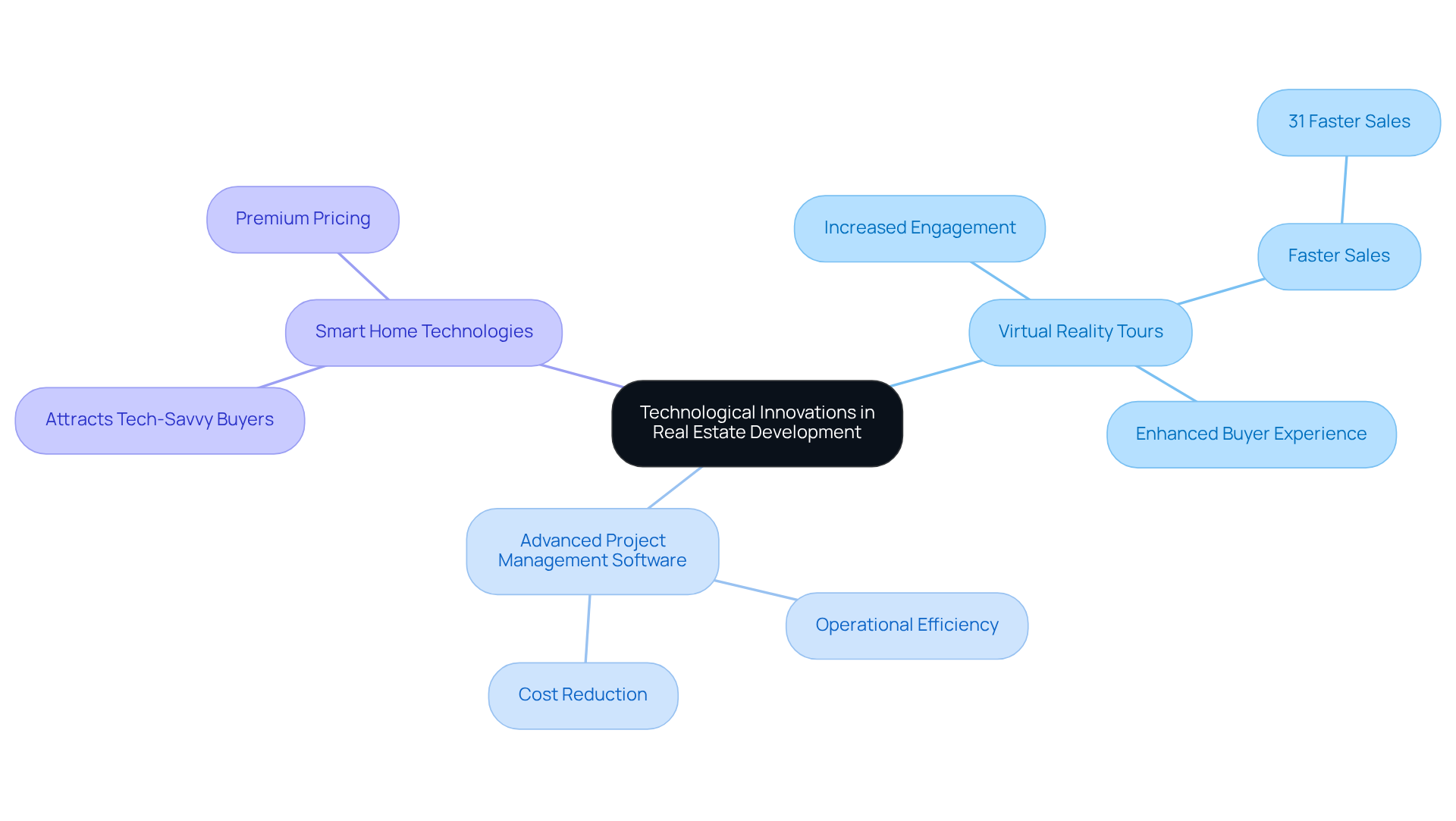
Remote Work Influence: Shifting Demand for Suburban and Rural Homes
The rise of remote work has significantly transformed housing preferences, leading to a marked increase in demand for suburban and rural homes. As individuals prioritize space and a higher quality of life, developers are shifting their focus to opportunities beyond urban centers. Properties that offer larger living areas and proximity to nature are becoming increasingly appealing. By 2025, it is projected that nearly 25% of remote workers will permanently relocate to suburban areas. This trend indicates that as remote work solidifies its place in the job market, the allure of suburban living is likely to intensify.
Moreover, with almost 60% of the global workforce anticipated to work remotely at least some of the time, we can expect a surge in advancements in these areas. To capitalize on this shift, developers must refine their strategies as highlighted in real estate development news to align with the evolving preferences of homebuyers who seek a harmonious balance between work and lifestyle. As Andrew Carnegie aptly noted, 'Ninety percent of all millionaires become so through owning real estate,' underscoring the critical importance of adapting to these changing dynamics.
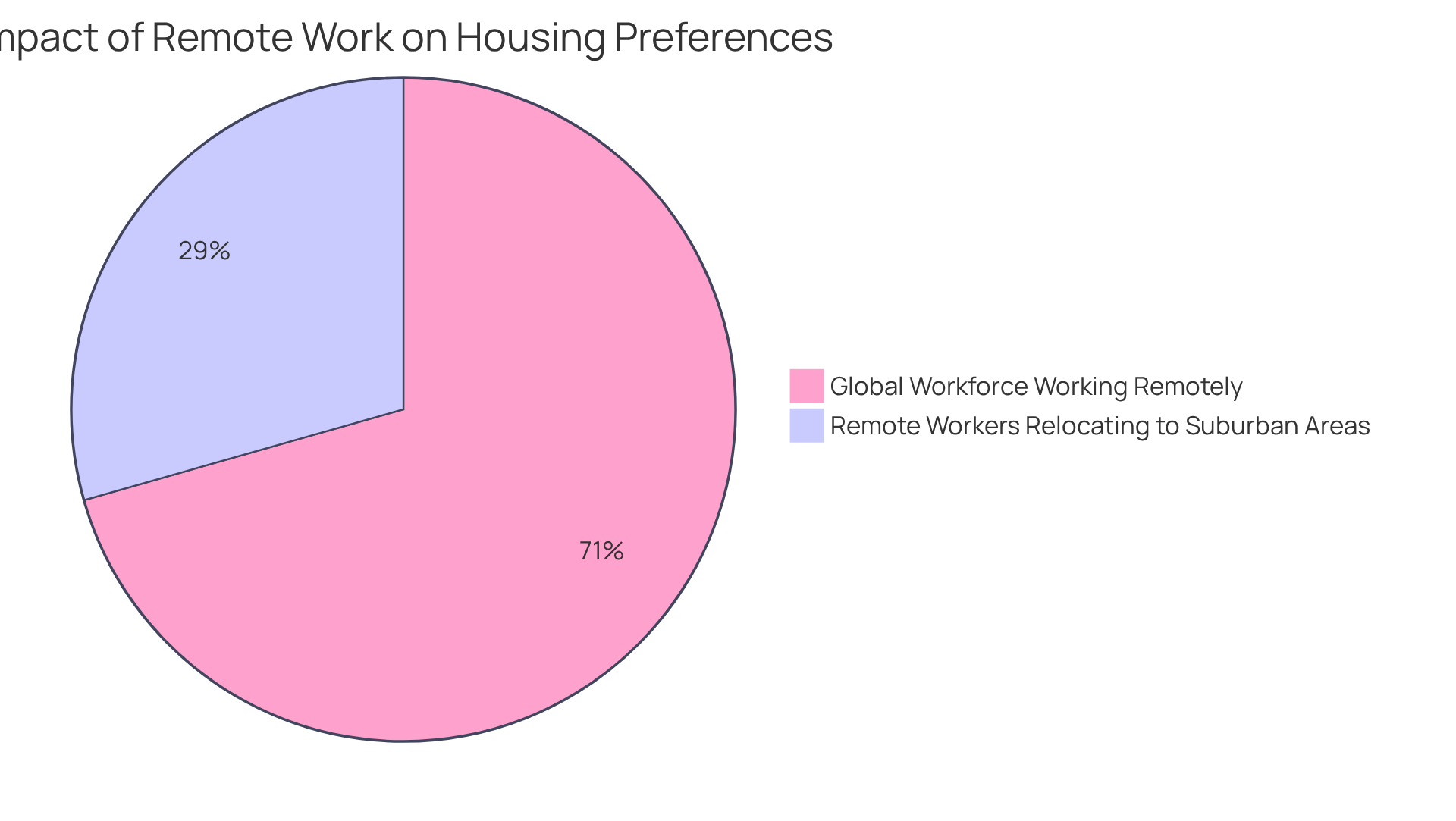
Mixed-Use Developments: A Growing Trend in Real Estate
Mixed-use projects are increasingly recognized for their ability to integrate residential, commercial, and recreational spaces, effectively addressing the growing demand for convenience and community-oriented living. Notably, nearly 80% of U.S. adults express a desire to live in live-work-play environments, signaling a significant shift in consumer preferences. The World Health Organization projects that by 2050, 70% of the global population will inhabit urban areas, underscoring the urgent need for these developments. By blending various functions within a single initiative, mixed-use projects cultivate vibrant neighborhoods that attract a diverse array of residents and businesses. The annual completion of apartments in these projects has surged, quadrupling from 10,000 in 2012 to 43,700 in 2021, according to ICSC, highlighting their rising appeal.
These advancements not only enhance regional livability but also stimulate local economies by creating jobs and providing essential services. Retail spaces within mixed-use developments often achieve impressive occupancy rates of 90-95%, compared to 80-85% for standalone properties, and can command rents that are 10-20% higher. This economic vitality is further reinforced by the fact that consumers are willing to spend up to 15% more in mixed-use environments, fostering a robust local market. Additionally, over 60% of retailers prefer mixed-use settings, indicating their attractiveness to businesses as well.
Urban planners emphasize the critical role of community engagement in the design and execution of mixed-use projects. Successful initiatives prioritize walkability and accessibility, ensuring proximity to transit options that cater to various income groups. By establishing self-contained neighborhoods that minimize commuting times, mixed-use developments not only elevate quality of life but also contribute to cleaner urban environments through energy-efficient designs. As the demand for these integrated living spaces continues to escalate, developers are urged to incorporate mixed-use elements into their projects, aligning with evolving market trends and community needs.
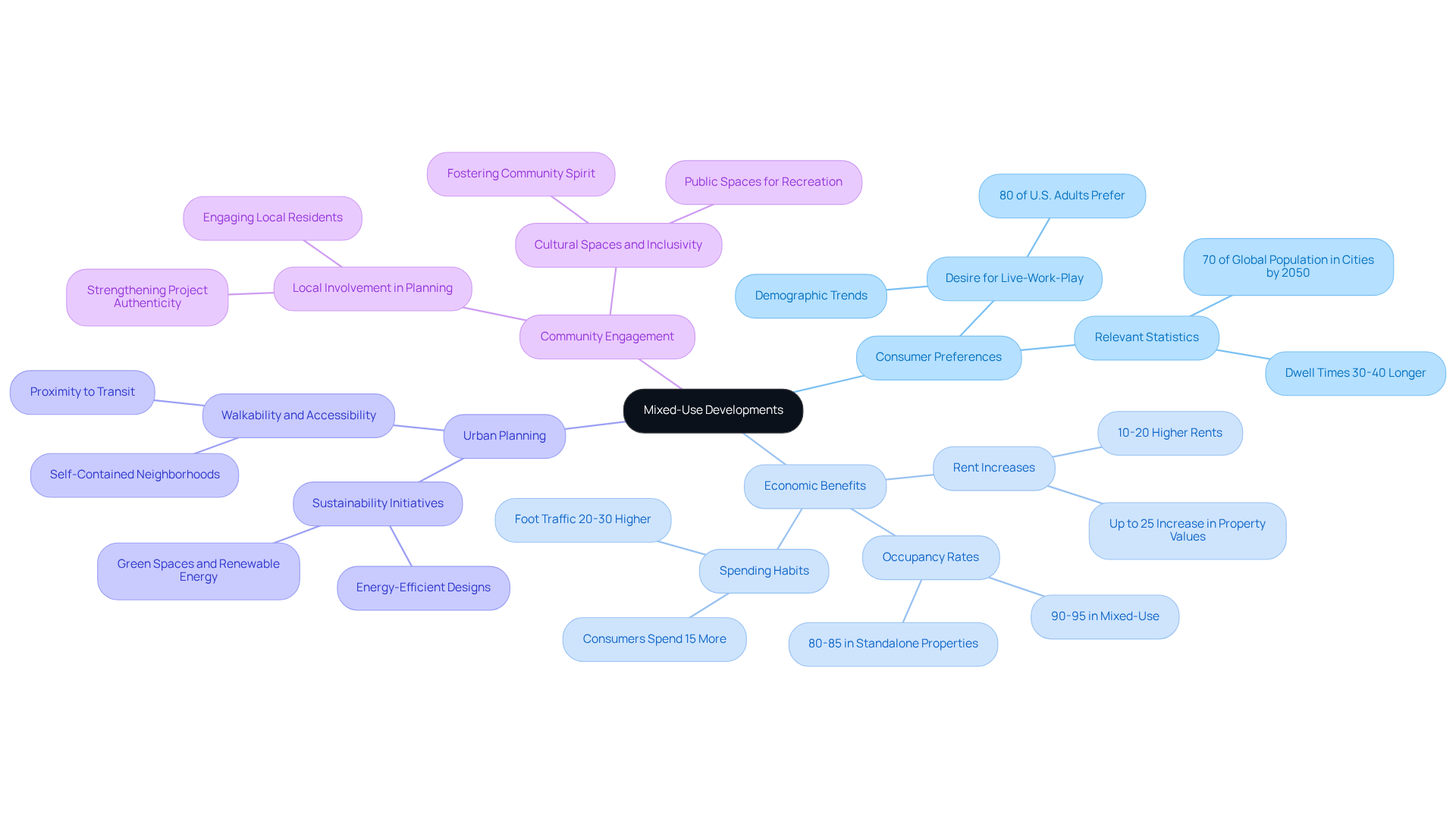
Affordable Housing Solutions: Addressing Urban Housing Shortages
As urban accommodation shortages continue to escalate, the demand for affordable living solutions has never been more critical. Developers are increasingly tasked with the responsibility of creating projects that provide accessible living alternatives for low- and middle-income families.
Innovative financing models, public-private partnerships, and the adaptive reuse of existing structures are essential strategies to address these challenges. By prioritizing cost-effective residences, developers not only fulfill a social obligation but also engage with a growing sector that values inclusivity and community support.
This approach not only meets immediate housing needs but also positions developers as leaders in a market that is increasingly focused on social responsibility.
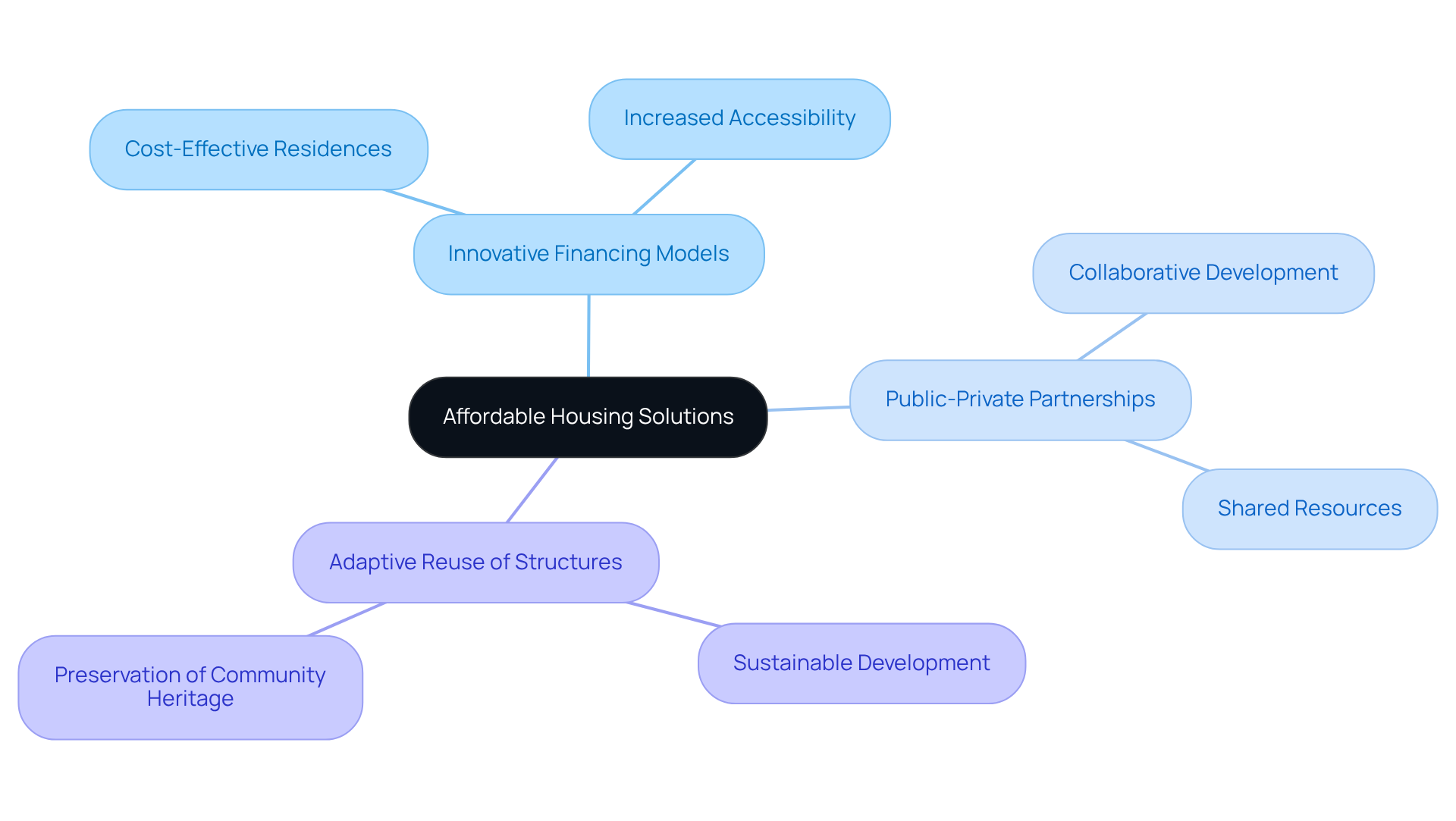
Global Economic Factors: Influencing Local Real Estate Markets
Global economic factors—such as interest rates, inflation, and geopolitical events—are crucial in shaping local conditions, which are often reported in real estate development news. As interest rates rise, buyer enthusiasm often wanes, leading to a decrease in housing demand. For example, with the average 30-year mortgage rate projected to hover around 6.7% by the end of 2025, and anticipated to dip slightly to 6.56% in November 2025 and 6.2% by December, potential homebuyers may choose to postpone their purchases, thereby affecting overall sector activity.
Conversely, economic growth in specific regions can create new development opportunities. The Emerging Trends in Real Estate® report highlights:
- Dallas/Fort Worth as the leading area for 2025
- Nashville and Phoenix as experiencing downturns
Developers and investors must remain vigilant in monitoring these trends to anticipate shifts in demand and pricing.
Understanding the broader economic landscape through real estate development news allows stakeholders to make informed, strategic decisions that align with economic realities, ensuring their projects remain viable and profitable. Additionally, a recent survey reveals that:
- 68% of commercial real estate professionals plan to ramp up their mergers and acquisitions activities
- 76% are prioritizing technology investments, including AI, as a key focus for 2025
This reflects a proactive approach to navigating economic challenges.
By leveraging insights regarding interest rates and their impact on housing demand, stakeholders can better position themselves within a competitive market.
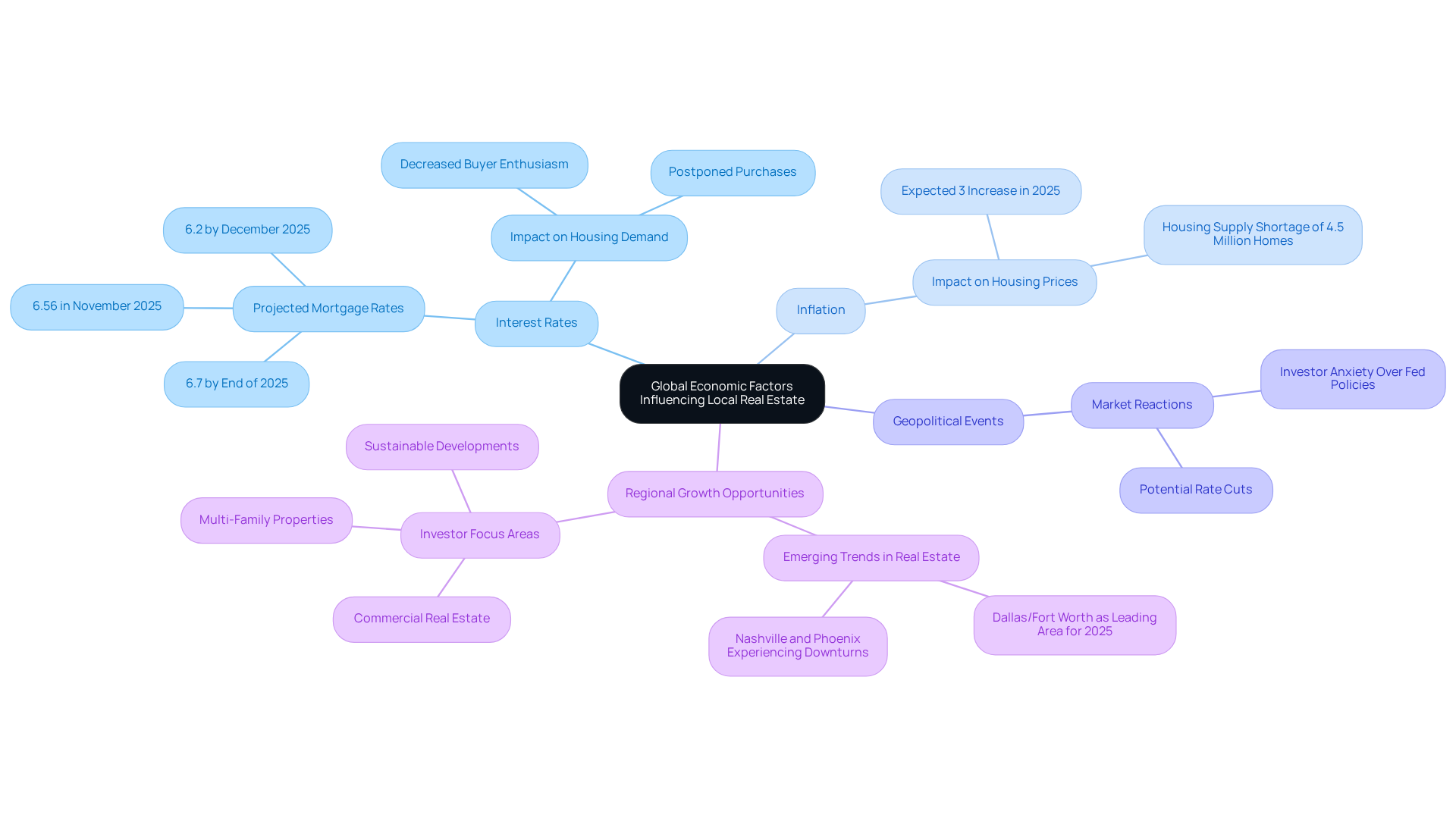
Health and Wellness Features: Enhancing Residential Development Appeal
Health and wellness features are increasingly pivotal in residential developments, as buyers prioritize their well-being more than ever. Incorporating amenities such as fitness centers, green spaces, and smart home technologies that enhance indoor environment quality significantly boosts the appeal of new properties. Developers who embrace this trend can attract a wider range of buyers, particularly in a post-pandemic environment where wellness has become a central focus of consumer interest.
By prioritizing health and wellness, developers not only create spaces that resonate with modern buyers but also foster a sense of community, ultimately driving property values upward. Recent data shows that wellness-focused residential properties carry a price premium of 10-25%, highlighting the financial advantages of incorporating health-oriented features into realty projects. Additionally, the wellness property sector was valued at approximately USD 517.2 billion in 2024 and is expected to attain USD 2,097 billion by 2033, emphasizing the considerable growth potential in this field.
Furthermore, the physical wellness sector represented the largest revenue portion of 47.66% in the total wellness real property share in 2024, indicating robust consumer preference for health-oriented attributes. As the wellness real estate market continues to expand, understanding buyer preferences for these amenities will be crucial for developers aiming to succeed in this evolving landscape.
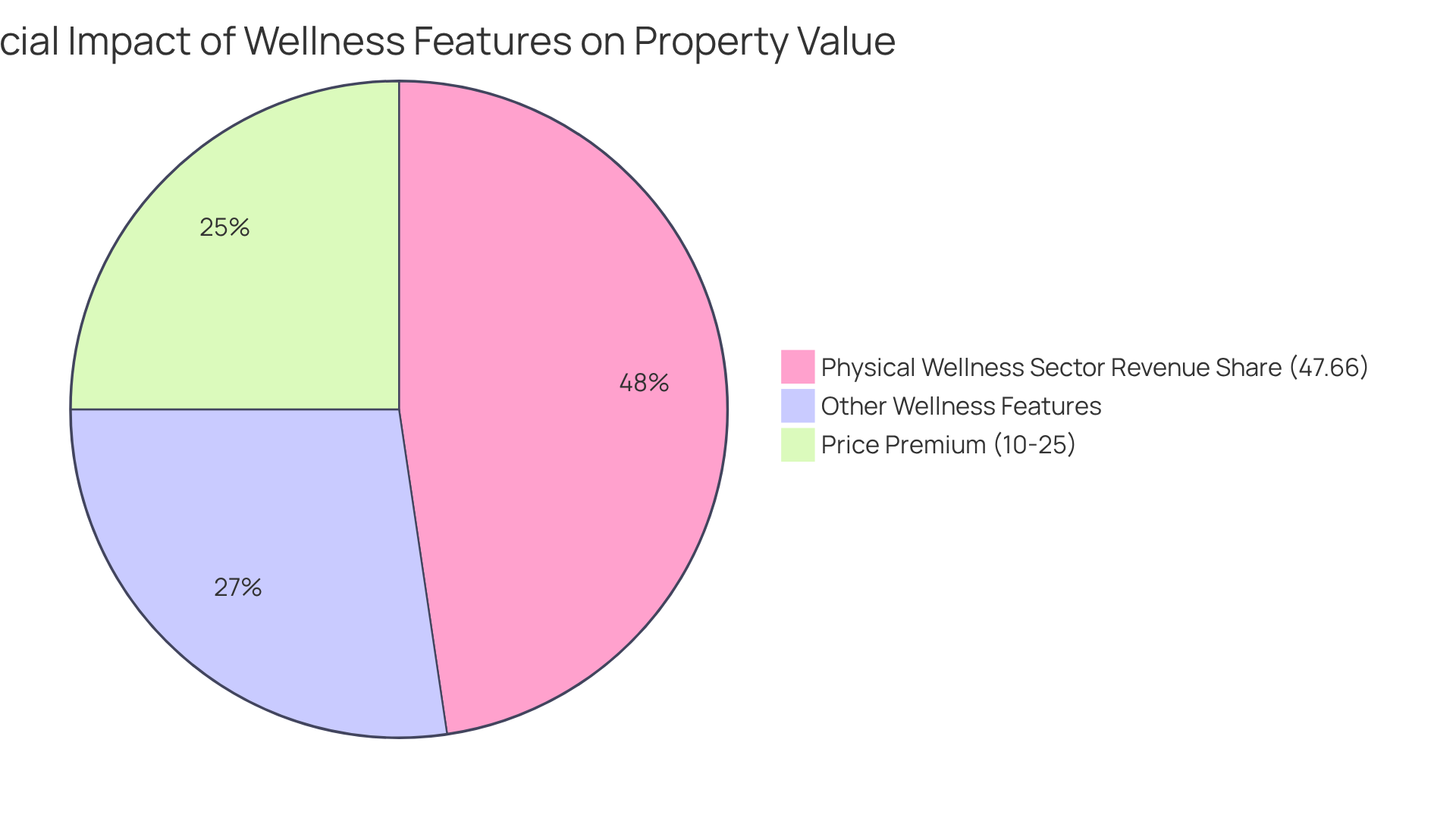
Conclusion
The evolving landscape of real estate development is being shaped by a multitude of trends poised to define the industry in 2025. From the migration towards low-tax states to the increasing demand for sustainable and wellness-oriented living spaces, these insights offer a roadmap for stakeholders navigating the complexities of the market. The emphasis on technological innovations and mixed-use developments illustrates the necessity for adaptability in an ever-changing environment, reinforcing the importance of staying informed through reliable sources like Zero Flux.
Key arguments highlight the significant rise in home and rental prices, driven by demographic shifts and economic influences. The growing mobility of Millennials and Gen Z, coupled with the demand for affordable housing solutions, underscores the urgency for developers to create inclusive and community-focused projects. Furthermore, the integration of health and wellness features within residential developments is not merely a trend but a crucial element in attracting modern buyers who prioritize their well-being.
As the real estate sector prepares for 2025, it is imperative for developers, investors, and industry professionals to embrace these trends and insights. By adopting a forward-thinking approach and leveraging data-driven strategies, stakeholders can position themselves for success in a competitive market. The call to action is clear: staying attuned to the evolving preferences of buyers and the broader economic landscape will be essential in crafting developments that resonate with the needs of future residents.




